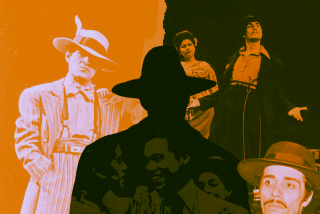Confusing Halloween
- Share via
While Americans savor Halloween, uninitiated immigrants may not have the same appreciation. Because his English skills were limited, Kent, a 9-year-old Chinese immigrant, had no idea what his classmates were talking about when they discussed their holiday costumes. On Halloween night, he went to bed early to be awakened by a pounding at the door. When he looked out the window and saw witches and ghosts standing on his porch, he assumed they were real. The terrified boy ran screaming into his parents’ bedroom.
Two sisters from Vietnam also were unfamiliar with the holiday, but they noticed the positive results of neighborhood children going door-to-door saying “trick or treat.” The following night they decided to try out the ritual. They entered a local candy store and said “trick or treat” to the startled shopkeeper. His laughter bewildered them until he gently explained the rules of Halloween; nonetheless, the youngsters felt sheepish.
English-as-second-language teachers participated in an online discussion of problems caused by assuming that all cultures have knowledge of Halloween. Miriam Burt recalled working in a Philippine refugee center with Cambodian refugees. She showed them a picture of costumed adults bobbing for apples. To her horror, the students interpreted the apples as blood in the water. Consequently, they assumed the photo depicted a scene of political torture which was reinforced by seeing the participants’ hands tied behind their backs. Eventually Burt convinced them of the happier truth.
More to Read
Sign up for Essential California
The most important California stories and recommendations in your inbox every morning.
You may occasionally receive promotional content from the Los Angeles Times.













